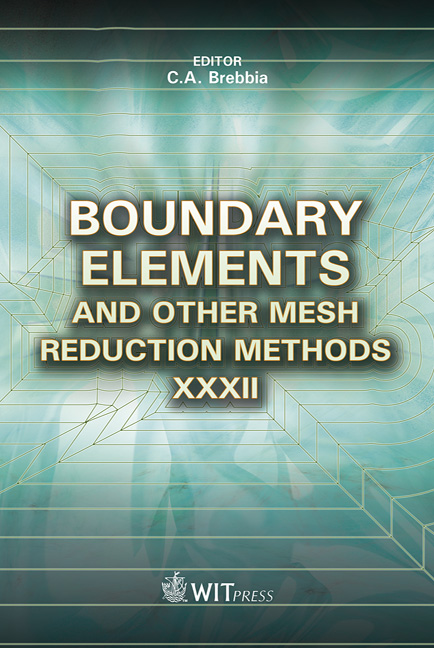Simulation Of Flow Of Nanofluids By BEM
Price
Free (open access)
Transaction
Volume
50
Pages
12
Page Range
3 - 14
Published
2010
Size
367 kb
Paper DOI
10.2495/BE100011
Copyright
WIT Press
Author(s)
J. Ravnik & L. Škerget
Abstract
Heat transfer is one of the major engineering problems, which has to be addressed when progress is made in engineering technology. Low thermal conductivity of fluids such as water or oil, led to the introduction of nanofluids – stable suspensions of nanosized particles in base fluid. Nanofluids have very high thermal conductivities at very low nanoparticle concentrations and are able to substantially increase heat transfer. Numerical solver for simulation of flow and heat transfer of nanofluids was developed using Boundary Element Method. Velocity-vorticity formulation of Navier-Stokes equations is proposed for nanofluids and solved by a combination of single domain and sub-domain boundary elementmethod. The developed solver was used to simulate three-dimensional natural convection of nanofluids. Results of simulations show that a substantial heat transfer enhancement can be observed and attributed to the usage of nanofluids. We observed that the nanofluid particle volume fraction also plays in important role increasing the volume fraction increases the heat transfer for all Rayleigh number values considered. Keywords: nanofluids, boundary element method, natural convection. 1 Introduction Nanofluid is a suspension consisting of uniformly dispersed and suspended nanometre-sized (10–50 nm) particles in base fluid, pioneered by Choi [1]. Nanofluids are used to replace low thermal conductivity working fluids such as water, oil or ethylene glycol. Nanofluids have very high thermal conductivities at very low nanoparticle concentrations. Buoyancy induced flow and heat transfer is an important phenomenon used in various engineering systems. Increased thermal conductivity of nanofluids plays a crucial role in the enhancement of heat transfer especially in slow, low Rayleigh
Keywords
nanofluids, boundary element method, natural convection





